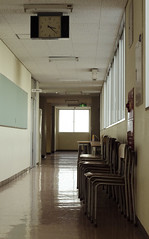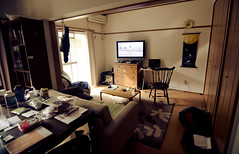

It's a pretty good set up: two bedrooms, one full bath, "3/4"-kitchen with an attached living room. It's a good size for two friends, a little small for three (maybe a tad small for two strangers, I guess), but workable.
And yet, as nice as it is, it's not place to spend an extended weekend! That's what Nikko's for!


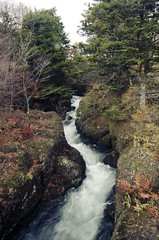
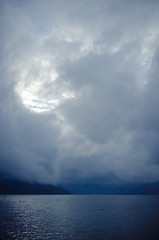
Nikko, the home of one of Japan's lavishly decorated Toshogu Shrine, is the town at the entrance to Nikko National Park. However, it wasn't the shrines that interested me (this time, at least), but the scenic Okunikko area around Lake Chuzenji (中禅寺湖 - ちゅぜんじこ), and the seasonal autumn colors (こよ).
It was a bit of a gamble, I'll admit, as reports were mixed regarding the color density, not even to make mention of the historical unreliability of Japanese weather forecasts. At ¥1,300
1 That's ¥$13 x 2: exorbitant in that the rail-system is the reason why every Japanese person should explore Japan more often but doesn't because it costs too much.
1 each way–which does not include the ¥$20 transit bus fare to and from Lake Chuzenji and does not including all of the standard temple/attraction fees, local bus fees, and cost of eating–it would be quite an expensive risk to take on "50%" chance of rain, especially with the seasonally late progression in autumn coloring.And yet there was no better opportunity to go (re: "non-weekend travel benefits") than last Monday. By all accounts, the trees around Chuzenji had reached peak-coloring, but the weekend's earlier rains had felled all of the less hardy (and more colorful) leaves from the deciduous trees, leaving a moist pallet of browns, yellows, oranges and ever-greens, with only a smattering of newly-turned bright red maples.
Nevertheless, I would not be deterred: it had taken 120 minutes by Tobu-Express and an extra 90 minutes by Tobu-bus (from Nikko). I was going to see some leaves!
Despite leaving my apartment at just before 6:30 am, I didn’t arrive at Chuzenji until a little after 11. By then, a heavy drizzle had settled into the volcanic crater, but looked to lift by mid-afternoon. Still unsure, I picked up a ¥600 umbrella, but ended up with a few stray water-spots on the lens anyway. It more-or-less cleared up on schedule, but the clouds persisted, trapped in the basin, continuing to pour over the southern side of the lake, limiting the visibility (and photographic opportunities) of the more colorful mountain-shadow trees.
Apart from the two "famous" waterfalls
2 I swear, everything in Japan is "famous."
2–the Kegon (華厳の滝) and Ryuzu (竜頭の滝 - "Dragon Head") falls were quite impressive–I made it a point to walk to at least half-way around the lake past Chuzenji Temple (a nifty little stop, if not a tad expensive at ¥$5), and at least put my soles on the iconic finger-peninsula. Actually, I don’t mean to short-shift either Kegon or Ryuzu falls, as both are seemingly a necessity for any pilgrimage to Nikko for koyo, but if I had to recommend one thing more to “truly” get the sense of a Nikko-experience, it’s the Chuzenji Temple. Built right into the mountainside with a majestic overview of the lake, Chuzenji Temple offers a synergistic contrast in nature and architecture. Besides its view, one of the main attractions of the Chuzenji Temple is its Tachiki Kannon, a centuries-old statue carved directly into the stump of an ancient tree whose roots are still burrowed deep into the mountain face.
Forgoing lunch, I completed my simple-circuit by around 4 pm, but as Japan has yet to discover the joys of Daylight Savings, I knew that with the heavy cloud cover it was going to get dark within the end of the hour, pretty much dashing any faint hopes I had of either walking the Nikko Abyss or any of the smaller shrines back in Nikko proper.
It ended up taking around 2 hours for the bus to wind its way back down the mountain (bring a good playlist: there’s a lot of bus involved along the Irohazaka Winding Road
3 Interesting to note, Japan-Guide reports that this once-48-turn road (now “just” 30) was named after an ancient acrostic poem that utilized all 48 characters of the Japanese syllabary just once.
3), so by the time I made it back to Nikko, all of the omiyage shops were closed. In fact, the only place that was opened was this mediocre yaki-tori shop called Happori Dako, which, apparently, is well featured by tourists on Lonely Planet. If I had to guess why, this is the only place in Nikko that stays open late enough for tourists on their way out of town.Good portion sizes, but that’s about it. Certainly highly edible, but beyond that I make no guarantees.
As always, the rest of my photos from Nikko (and my apartment) can be found on my flickr.







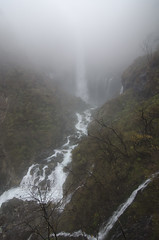
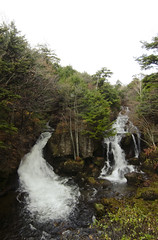

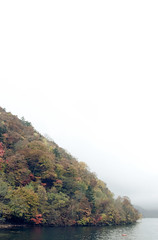
Post Script for you future travelers: be sure to abide by the Tobu-line timetables as the last train leaves Nikko before 8 pm
4 You definitely wouldn't want to be stranded there over night, that's for sure.
4.Additionally, the last two "rapid" services leave from Shimo-Imaichi (下今市駅 - しもいまいち - the junction you have to use to get back to Tokyo) at 5:05 and 6:21 pm, meaning that any train you catch after that is a "limited express," which is "reservation only" (read: "¥1,000 reservation fee"). This is certainly a bit of a “gotcha” as it was pretty much me and 3 other people on the train at the time. But when they “gotcha,” they certainly got-cha.


